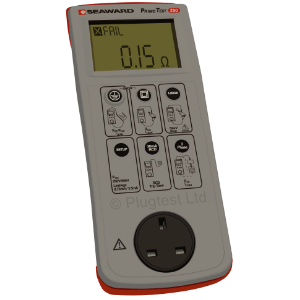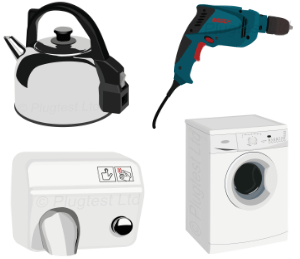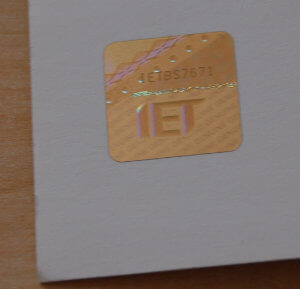IET Code of Practice - 5th Edition Update

The IET Code of Practice for In-Service Inspection and Testing of Electrical Equipment underwent a significant update in November 2020 with the release of its fifth edition. This latest version includes some important changes and as such, all our PAT testing courses are designed to align with the latest edition of the Code of Practice.
The City & Guilds 2377 qualification has also been updated to reflect the changes introduced. The latest iteration of this qualification is now known as City & Guilds 2377-77, and it supersedes both the 2377-22 and 2377-32 versions. If you are attending a City & Guilds PAT course, you will need this latest edition of the Code of Practice. If you have an older qualification, there is no requirement to update to the lasted version, but you should be aware of the changes. If you are looking for a refresher course, we would recommend attending our PAT Competent Person course.
Electrical Tests
The 5th edition has made some changes to the guidance on the earth continuity test, the limit for the leakage test has been changed and the test procedure for equipment with a functional earth has been clarified. These changes have been introduced to avoid unnecessarily failing equipment. The good news is that if you are carrying out the testing to the guidance in the 4th edition, you do not need to make any drastic changes, but you should be aware of the changes to avoid unnecessarily failing equipment.
New Leakage Test Limit
The most significant change is the increase in the limit of the leakage test. Although the leakage test has always been an optional test, most modern PAT instruments automatically carry out a leakage test, or substitute leakage test, as standard on all equipment. The 5th Edition now recommends a limit of 5 mA for all equipment, both Class I and Class II.
| Appliance Type | Old Limit | 5th Edition Limit |
|---|---|---|
| Class I Handheld & Portable | 0.75mA | 5mA |
| Class I IT, Movable, Stationary & Fixed | 3.5mA | 5mA |
| Class I Heating & Cooking | 0.75 mA or 0.75 mA per kW, whichever is greater, with a maximum of 5 mA |
5mA |
| Class II All Types | 0.25mA | 5mA |
The leakage test originates from the compliance tests carried out by the manufacturer which requires certain control conditions and test circuits in order to give accurate results. In practice, it has often been difficult to obtain results that meet the previous limits in the 4th edition. Certain appliance types, such as washing machines and microwave ovens, can sometimes be difficult to obtain a reading below 3.5 mA, so the increase to 5 mA should make testing of this type of equipment much easier and will prevent unnecessarily failing equipment.
Most PAT test instruments will be pre-programmed with the old limits, so if the limits can not be manually changed, it will require interpretation of the test results to apply the limit of 5 mA to any equipment failing at the previous test limit.
Borderline Earth Continuity Readings

The standard limit of (0.1 +R) Ω, where R is the resistance of the supply cable, still applies for the earth continuity test. However, there are now some additional notes that allow for some leeway on borderline readings.
Borderline readings should not be discounted as a fail if they are within tolerance of the test instrument. All test instruments have a specified accuracy of the readings. Test instruments from different manufacturers may have varying degrees of accuracy, but they are generally expressed as a percentage plus a number of digits, for example ±(5% + 2 digits). When measuring relatively small amounts of resistance, the accuracy to the number of digits is the most significant. An accuracy of ± 2 digits means that the reading may vary by 0.02 Ω but still be within tolerance. So in practice, in this case a test reading that is 0.02 Ω higher than the calculated (0.1 + R)Ω limit should be considered acceptable.
The 5th edition also allows for some leeway for older appliances that have a slightly higher measured earth continuity resistance than (0.1 + R)Ω, up to a maximum of 0.5 Ω. A measurement slightly higher than the limit should be considered acceptable provided that the increase in resistance is due to the design of the equipment and not the deterioration of the earth connection. In practice it is difficult to know if the increased resistance is due to the design or not and the term ‘older’ is subjective. Our advice would be to apply this with some caution and note that it is only readings that are slightly above (0.1 + R)Ω where this would be applicable. Where possible, previous test results should be checked to ensure the resistance has not increased, which would indicate a deteriorating earth connection.
Clarification of Functional Earth Equipment

Certain appliances require an earth connection for functional purposes, rather than for electrical safety. This is typically the case with IT or communications equipment that needs an earth connection to meet Electro Magnetic Compatibility (EMC) requirements. Laptop power supplies and other switch-mode power supplies used on IT equipment are the most common types of equipment with a functional earth. While fault protection is provided by double or reinforced insulation, these appliances cannot be considered standard Class II appliances due to their earth connection. This was alluded to in the 4th edition, but the 5th edition further clarifies this with a new equipment classification: Class II FE (Functional Earth). It explicitly states that this type of equipment should be inspected and tested as Class II equipment.

IEC 62368-1, the latest harmonised product safety standard for Information and Communication Technology (ICT) and Audio/Video (AV) equipment, introduced a new symbol for this type of equipment. The symbol is a combination of the double-insulated, square-within-a-square symbol, and the existing symbol for a functional earth. The new standard is gradually being implemented and is set to replace all existing IT and audio/video standards by December 2020. Many new IT power supplies are now using the Class II FE symbol, but it's unlikely to be found on older equipment. Some older Class II FE equipment may be marked with 'ITE'.
Frequency and Appliance Types
Risk Based Frequency
The 5th edition of the Code of Practice places a greater emphasis on risk assessment as the basis for determining the frequency of inspection and testing. It provides sample risk assessments in an appendix, and the table suggesting initial frequencies has been completely removed. While the frequency table was a useful tool for providing some guidance on suitable test intervals, it appears that the decision to remove it was made because too many people were relying on it instead of conducting a proper risk assessment.
Appliance Types

The 5th edition of the Code of Practice has removed the detailed descriptions of appliance types such as hand-held, portable, movable, stationary, and so on. The intention is to ensure that all equipment falls under the guidance of the Code of Practice, unless it is covered by another inspection and testing regime, such as the Electrical Installation Condition Report (EICR). This has always been the case in previous editions of the Code of Practice. However, the removal of the frequency table and the change in the leakage limit to 5 mA for all equipment types now allows for the complete removal of the detailed descriptions of appliance types.
ES1 / ES2 Classifications
The 5th edition of the Code of Practice introduces new classifications, ES1 and ES2. These have been included in anticipation of the new product standard, BS EN 62368, which is set to be introduced in December 2020. BS EN 62368 covers a wide range of electronic, IT, and communication technology products. This new standard is based on Energy Source (ES) classifications, which replace the previous approach of protection based on voltages, such as extra-low voltage (ELV) and separated extra-low voltage (SELV). While there are some differences, ES1 is broadly comparable to SELV, offering protection against electric shock based on separation and a limited voltage that won't harm a user in the event of a fault. Equipment supplied from either a SELV or ES1 source typically doesn't require testing, so this change is largely technical and should not impact those undertaking PAT testing.
| Energy Source | Effect on Body | Effect on Combustible Material |
|---|---|---|
| Class 1 | Not painful, but may be detectable | Ignition not likely |
| Class 2 | Painful, but not an injury | Ignition possible, but limited growth and speed of fire |
| Class 3 | Injury | Ignition likely, rapid growth and speed of fire |
Purchasing the Code of Practice

With each new edition of the Code of Practice, there is an inevitable price increase. The current price stands at £60! As with any other item that carries a high price tag, it becomes a target for counterfeiters. To combat this, genuine copies now feature a hologram on the inside front cover. If you're planning to attend a PAT testing course that leads to the City & Guilds 2377-77 qualification, you'll need a copy for the exam. You can purchase a copy direct from the IET or Amazon.